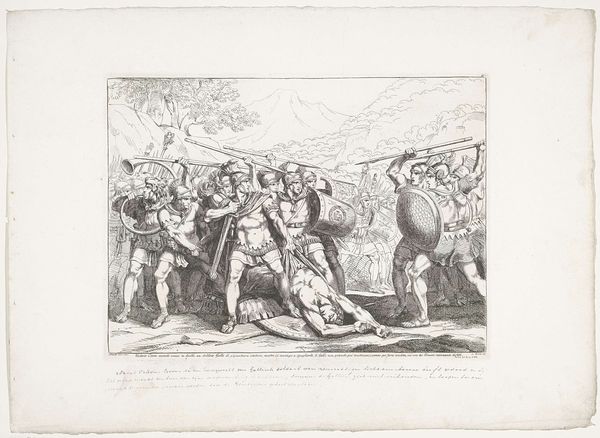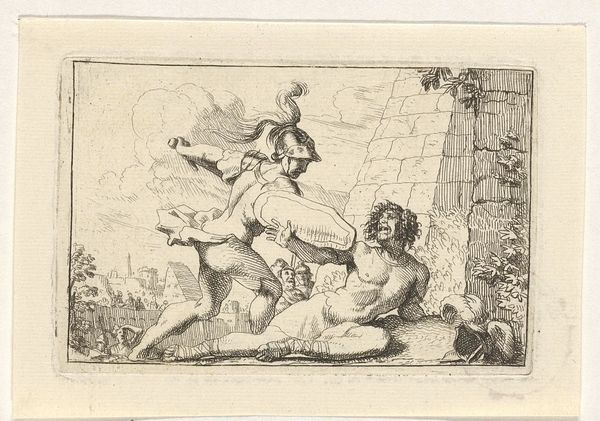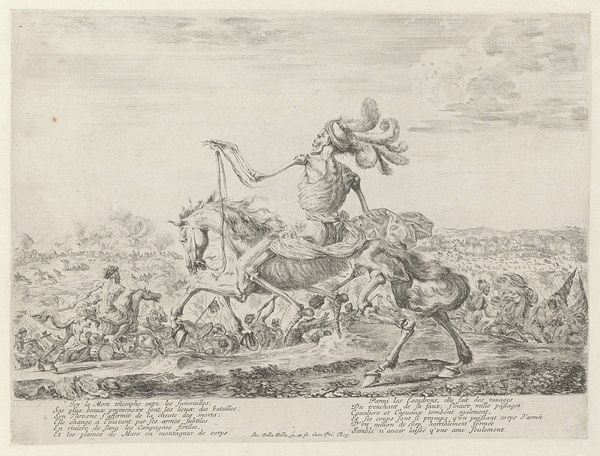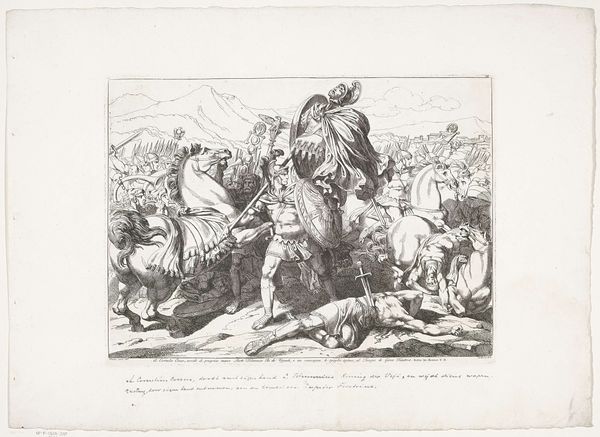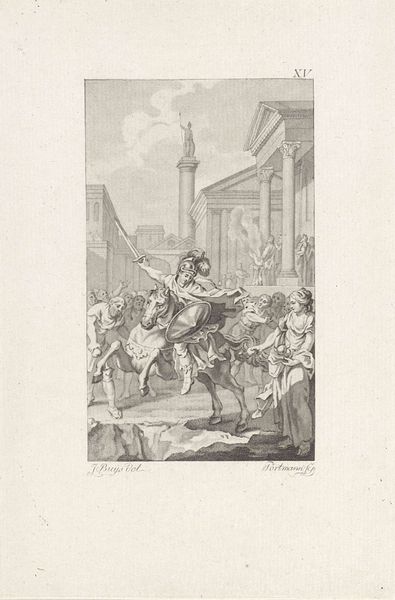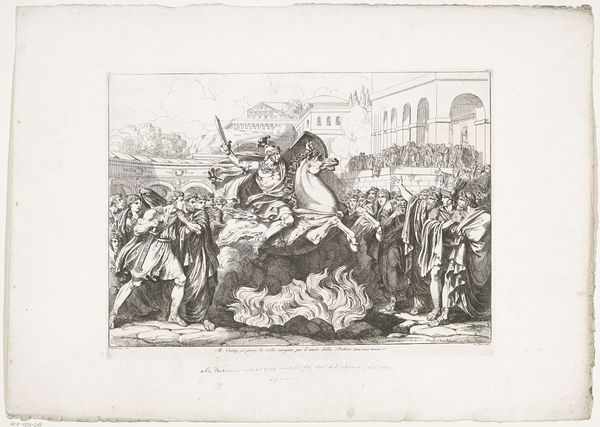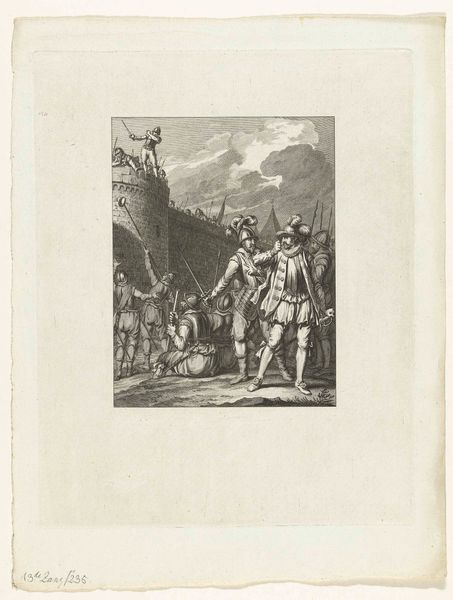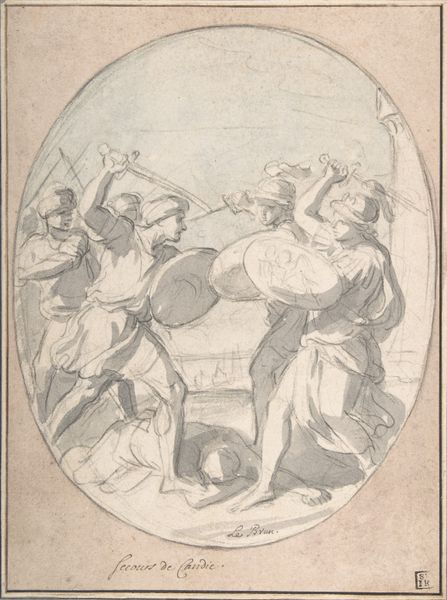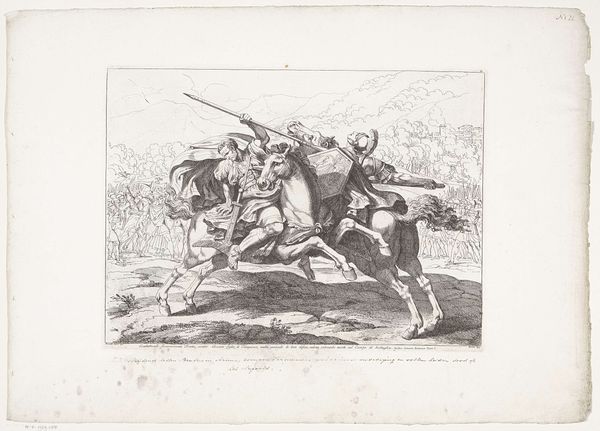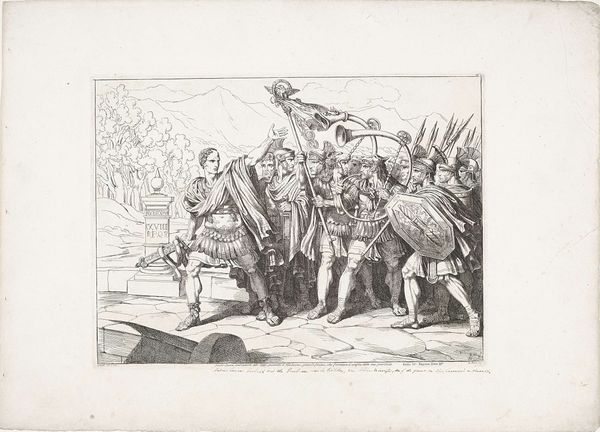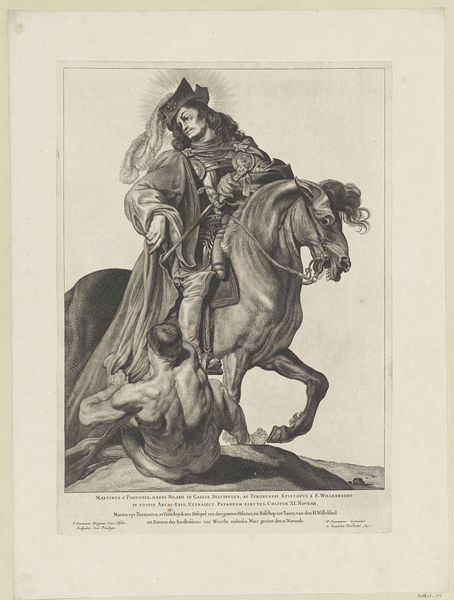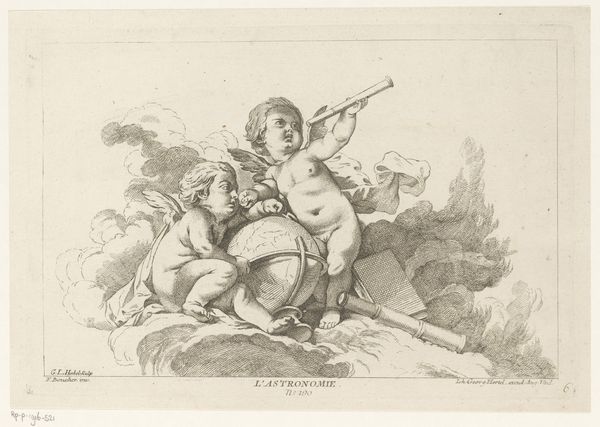
print, engraving
# print
#
pen illustration
#
figuration
#
history-painting
#
academic-art
#
engraving
Dimensions: height 315 mm, width 424 mm
Copyright: Rijks Museum: Open Domain
Curator: Look at this print, Titus Manlius Torquatus in gevecht met een grote Galliër, made in 1819 by Bartolomeo Pinelli. The title translates to "Titus Manlius Torquatus in combat with a large Gaul." It depicts, as you might expect, two warriors locked in fierce combat. Editor: Immediately I notice how dynamic it is, the sheer kinetic energy captured through the use of line. The figures are caught mid-action, every muscle seems to strain under the intense movement. Curator: Pinelli masterfully recreates the visual language of ancient Rome. It evokes ideals of Roman virtue. This specific image reflects an important tale of bravery. Titus Manlius earned his title “Torquatus” when he bravely took on a Gaul in single combat, earning honor and a golden torc or neck ring. Editor: Yes, this emphasis on line is central, as each mark articulates form, delineates shadow, and contributes to this energetic atmosphere. Notice, too, how the composition leads your eye--almost violently--into the fray. It has a vorticist quality, wouldn't you say? Curator: Very astute. This clash becomes symbolic of Roman dominance and the personal qualities they hoped to embody—courage, discipline, and loyalty. I’m struck by the artist's attempt to visualize complex and ancient codes. It gives insight into how heroism was conceived, both then and in 1819. Editor: Certainly, there's also something quite compelling about the work’s texture— the rough, almost frenetic quality of the engraving imbues the scene with heightened tension. It's as though the very medium is mimicking the raw struggle on display. Curator: And looking at the landscape in the background we get the sense of an amphitheater, the coliseum maybe, amplifying its purpose. Rome becomes as much of a central figure here as the combatants. It underscores how Rome memorializes, but also seeks to justify and immortalize violence as heroic. Editor: I agree wholeheartedly. Examining the piece, from its rhythmic lines to its potent symbolism, enriches our comprehension, demonstrating not only the artist's technique, but also its lasting significance. Curator: The ways the artist has captured a single battle holds so many threads connecting culture and individual, past and present.
Comments
No comments
Be the first to comment and join the conversation on the ultimate creative platform.
